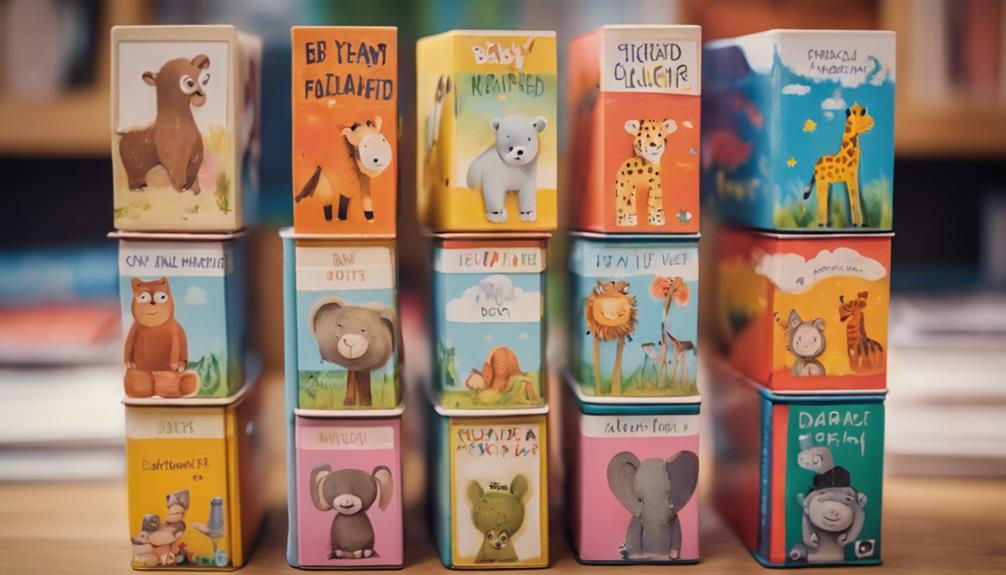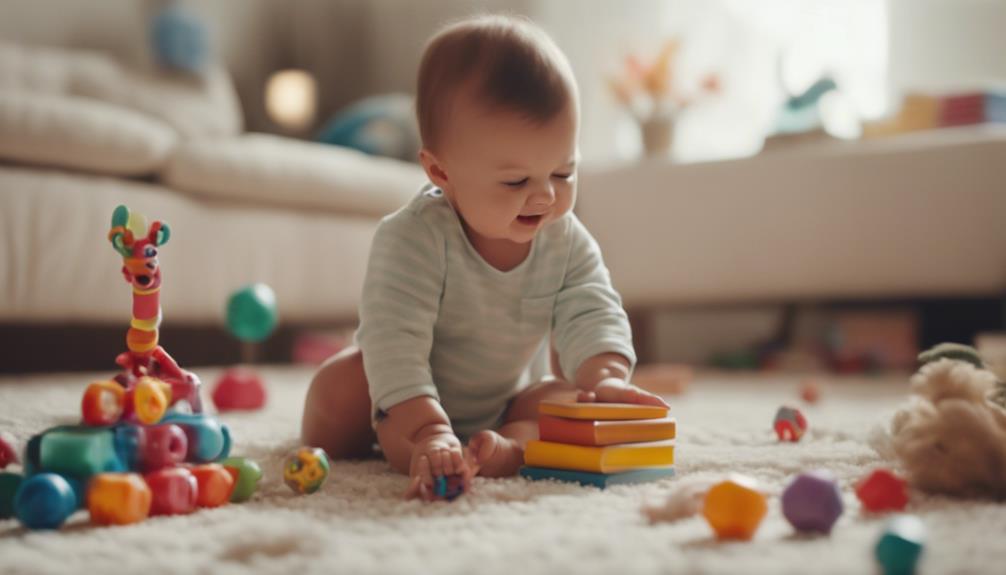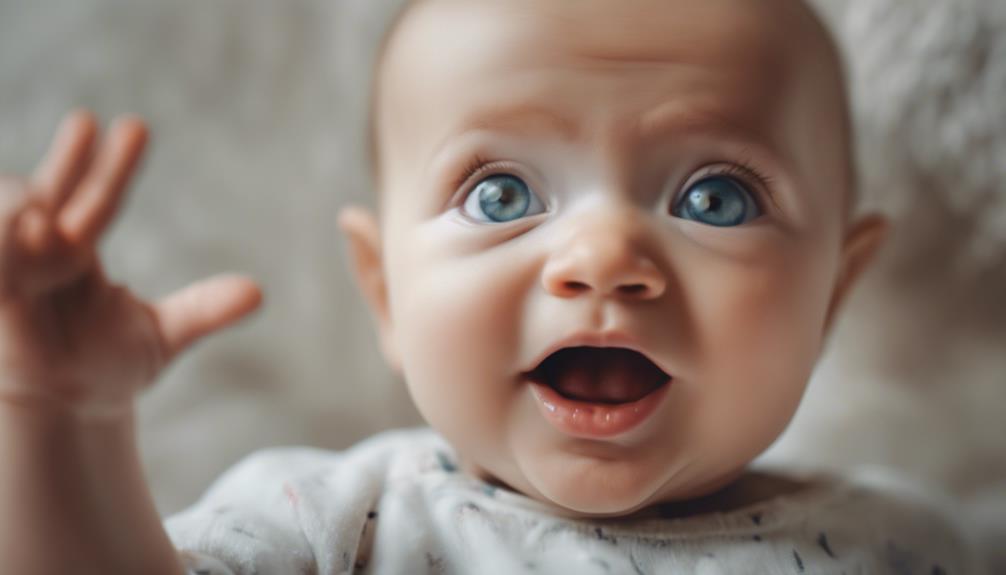As your baby grows, their brain rapidly develops in the early years, laying the groundwork for future cognitive abilities. Neurons begin forming around week 5 of pregnancy, with synapse creation starting by week 10. Positive interactions with parents and caregivers are crucial for healthy brain growth. Genes determine the basic brain structure, while environmental factors influence gene expression during development. Early experiences, nutrition, and nurturing environments are key in creating lasting brain connections. Knowing these stages will assist you in aiding your baby’s brain development. Delve deeper to enhance your understanding of what to anticipate on this important journey.
Key Takeaways
- Neurons form around week 5 of pregnancy, synapses start developing by week 10.
- Synapses multiply rapidly in the second trimester, shaping neural networks for cognitive functions.
- Nearly 90% of brain growth is completed by age 5, laying the foundation for future cognitive abilities.
- Positive interactions with parents and caregivers are crucial for healthy brain development in babies.
- Early experiences impact future achievements; nurturing environments and quality care play pivotal roles.
Brain Development Overview
During the first few years of life, your baby's brain undergoes rapid development, laying the foundation for future cognitive abilities. This early brain development is a pivotal period for the forming of neural connections that shape your child's future.
Nearly 90% of brain growth is completed by age 5, emphasizing the importance of positive interactions with parents and caregivers in these early years. The developing brain in early childhood sets the stage for learning, behavior, and emotional regulation later in life.
The prefrontal cortex, responsible for complex decision-making and personality expression, continues to mature until around age 25. This area of the brain is essential for adult functions and undergoes significant development during the teen years.
Understanding the importance of these early years in brain growth highlights the impact that parental involvement and a nurturing environment can have on your child's cognitive development. Remember, the neural tube closes early in pregnancy, making these initial years crucial for setting the stage for your baby's future cognitive abilities.
Neurons and Synapses Formation

Around week 5 of pregnancy, neurons start forming in the fetal brain, initiating the foundation for future cognitive development.
As the pregnancy progresses, by week 10, synapse formation begins, allowing for communication between these neurons.
Throughout the second trimester, synapses rapidly multiply, establishing the groundwork for future brain function.
These synaptic connections continue to develop and refine throughout the remainder of the pregnancy, creating intricate and specialized networks within the brain.
This process of synapse formation is vital as it shapes the neural network that will support various cognitive functions in the baby's brain.
The intricate dance of synapse formation is a remarkable feat of nature, setting the stage for the baby's brain to grow and develop in a structured and organized manner.
This early stage of neural development is fundamental in building the foundation for the brain's ability to process information, learn, and adapt to the world.
Early Experiences Impact
Positive early experiences greatly shape the future achievements, success, and happiness of children's brain development. During the critical period of early childhood, the brain is exceptionally malleable, forming connections based on daily experiences.
Quality care, enriched environments, and stimulation play pivotal roles in determining which brain connections are strengthened and which are pruned. The brain's plasticity allows it to adapt efficiently, forming surplus synapses in the first three years and then refining them through pruning processes for peak functioning.
This period presents a unique opportunity for parents, caregivers, and communities to influence lifelong learning, behavior, and health outcomes through early experiences. Investing in providing a nurturing and stimulating environment during early childhood can yield significant long-term benefits, setting the foundation for enhanced cognitive abilities, emotional well-being, and overall success in life.
Genes Vs. Environment Influence

Genes and the environment both play key roles in influencing baby brain development. While genes determine the basic brain structure and function, environmental factors such as nutrition, stimulation, and caregiving impact how these genes are expressed during brain development.
The interactions between genes and the environment are vital as they shape neural connections, cognitive abilities, and emotional regulation in babies.
Providing environmental enrichment, such as responsive caregiver interactions and sensory stimulation, can positively impact gene expression and overall brain development in infants. By understanding the interplay between genes and the environment, parents and caregivers can optimize outcomes for baby brain development.
Creating a nurturing environment with opportunities for exploration and learning can support healthy brain development in babies. Remember, a rich and stimulating environment, coupled with loving and responsive interactions, can have a significant impact on a baby's cognitive and emotional development.
Impact of Early Messages
Early messages and interactions with caregivers greatly influence the development of neural connections in a baby's brain. These initial interactions play an essential role in shaping the brain architecture, impacting the child's future learning abilities, behavior, and emotional regulation.
Positive experiences during this critical window can lead to healthy brain development and increased resilience in children. Responsive relationships with caregivers are key to fostering this positive growth in the baby's brain.
On the contrary, adverse messages or lack of nurturing interactions can impede neural connection formation, potentially resulting in long-term negative outcomes for the child. It's during early childhood that the brain is most receptive to external influences, making it vital to provide the necessary support for optimal brain shaping.
Brain Growth Before Kindergarten

Brain growth accelerates markedly before kindergarten, showcasing the rapid development that occurs in a child's early years.
In fact, 90% of brain growth happens before kindergarten, with the brain doubling in size in the first year and reaching about 80% of adult size by age 3.
By age 5, nearly 90% of brain growth is complete, emphasizing the pivotal role of early childhood in making neural connections.
Brain development starts in a baby's first years, with their daily experiences determining which brain connections develop.
Positive interactions with parents and caregivers contribute greatly to brain development in the first three to five years of life.
Childhood serves as an important period for shaping lasting brain connections, highlighting the impact of quality care and stimulation on brain development.
As a result, nurturing brain growth during this early window of opportunity is essential for laying a strong foundation for a child's cognitive development before they enter kindergarten.
Building Brain Connections

Before kindergarten, the experiences and interactions infants have play a pivotal role in shaping their brain connections as they grow. Building neural connections is vital for brain development in babies. Positive interactions with caregivers are key contributors to forming these connections.
Daily experiences, including the quality of care and stimulation provided, greatly influence which brain connections develop in infants. It's imperative to create an environment rich in positive experiences to support the formation of lasting brain connections.
Early experiences have a profound impact on the neural pathways that are established in the developing brain. By ensuring that infants receive adequate care, attention, and stimulation, caregivers can positively influence the development of their brain connections.
Investing in the early years with meaningful interactions can lay a strong foundation for a child's cognitive and emotional development. Remember, the interactions and experiences infants have today shape their brain connections for the future.
Role of Relationships

Responsive and dependable relationships with parents and caregivers play an essential role in influencing healthy brain development in babies. Engaging with children from birth fosters lasting brain connections, wiring their brains for future learning and social interactions.
Serve and return interactions, where babies initiate actions and adults respond, are fundamental for cognitive and emotional development. The quality of care and stimulation in early relationships directly impacts the development of babies' brains.
Positive interactions with adults contribute greatly to the formation of lasting brain connections in infants. By providing a nurturing environment and actively engaging with your child, you're setting the stage for their healthy brain development.
Nutrition and Brain Development

A diet rich in specific nutrients is essential for supporting healthy brain development in babies.
Folic acid, found in leafy greens and citrus fruits, aids in neural tube development critical for early brain growth.
Omega-3 fatty acids from fish, nuts, and seeds are vital for brain function and growth in infants.
Iron sources like lean meats and fortified cereals play a key role in oxygen transport to developing brains.
Choline, obtained from eggs and cruciferous vegetables, supports brain development and memory formation.
Additionally, antioxidants present in foods like berries and dark leafy greens protect developing brains from oxidative stress, ensuring excellent brain health.
Including these essential nutrients in your baby's diet can greatly impact their cognitive development and overall brain function. Remember, a well-balanced nutrition plan is fundamental to laying a strong foundation for your baby's brain development.
Frequently Asked Questions
What Weeks Are Most Important for Baby Brain Development?
During pregnancy, the weeks most important for baby brain development are in the first trimester when essential neural structures form rapidly. Ensuring proper nutrition and care throughout gestation supports ideal brain growth for your baby.
What Is the Most Critical Time for Brain Development?
In your child's life, the most crucial time for brain development is during early childhood. By age 5, nearly 90% of brain growth is complete. Your interactions and care play an essential role in shaping their future abilities.
How Do I Know My Baby's Brain Is Developing?
Notice your baby's milestones like tracking objects, responding to sounds, and grasping. Engage in sensory activities like talking, singing, and playing. Monitor social interactions, emotions, and language. Consult experts if needed. Celebrate progress and provide a nurturing environment.
What Can Affect a Baby's Brain Development?
Various factors impact your baby's brain development, such as proper nutrition, positive interactions, adverse experiences, and engaging activities. Providing a safe and nurturing environment is essential for fostering healthy brain development in your little one.
Conclusion
So, now you know all about baby brain development stages. Remember, those little brains are like sponges soaking up everything around them.
It's like they're building a little brain city in there, with connections growing like busy highways. Just keep giving them love, attention, and nutritious food, and watch those tiny brains flourish!
It's like watching a little genius in the making. Keep up the good work, brain builders!









